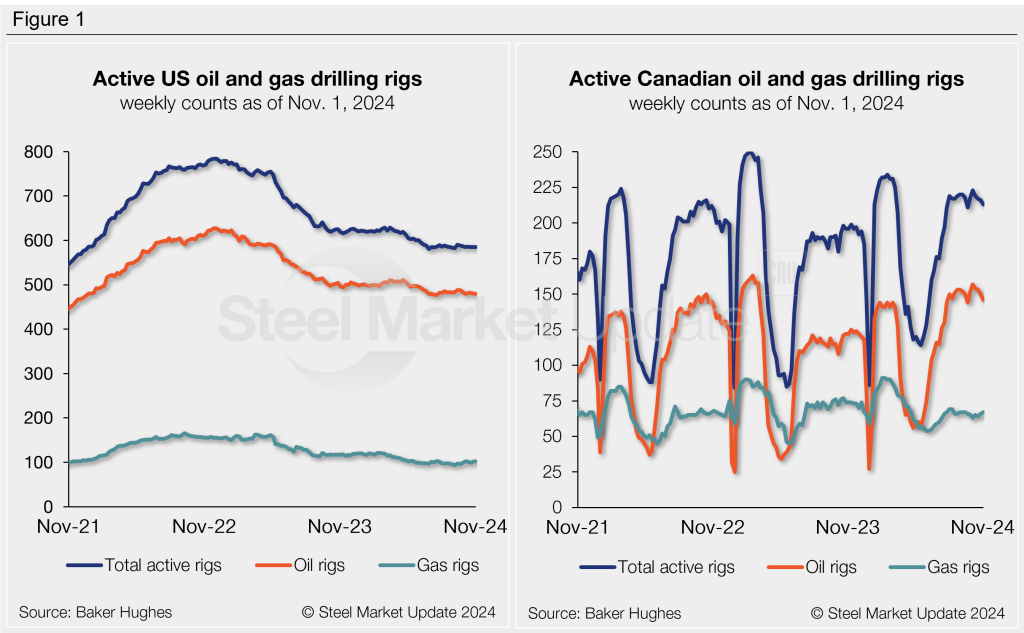Features

Active rig counts stabilize in US, slip in Canada
Written by Brett Linton
November 1, 2024
The number of active oil and gas drill rigs operating in the US last week held stable for the third consecutive week. At the same time, Canada’s counts declined slightly, according to the latest information from Baker Hughes.
US rig activity has been historically weak since June, hovering just above multi-year lows for four months. Canadian counts have ticked lower in recent weeks but remain strong.
US rig counts
Through Nov. 1, there were 585 drilling rigs operating in the US, unchanged from the prior week. The number of oil rigs fell by one week over week (w/w) to 479, gas rigs rose by one to 102, and miscellaneous rigs were unchanged at four.
There were 33 fewer active US rigs during the week compared to one year prior, with 17 fewer oil rigs and 16 fewer gas rigs.
Canadian rig counts
There were 213 active Canadian drilling rigs last week, three fewer than the previous week. Active oil rigs fell by four w/w to 146, and gas rigs rose by one to 67.
There are currently 17 more Canadian rigs in operation than a year ago, with 24 more oil rigs and seven fewer gas rigs.

International rig count
The international rig count is a monthly figure updated at the beginning of each month. The total number of active rigs in the month of October rose to 950, up three from September but down 12 from October last year.

The Baker Hughes rig count is important to the steel industry because it is a leading indicator of demand for oil country tubular goods (OCTG), a key end market for steel sheet. A rotary rig rotates the drill pipe from the surface to either drill a new well or sidetrack an existing one. For a history of the US and Canadian rig counts, visit the rig count page on our website.

Brett Linton
Read more from Brett LintonLatest in Features

Final Thoughts
Nearly 50% of respondents to our latest survey thought hot-rolled coil prices have already peaked. And where will those prices be two months from now? Responses were decidedly split on that question.

April energy market update
In this Premium analysis we examine North American oil and natural gas prices, drill rig activity, and crude oil stocks. Trends in energy prices and rig counts serve as leading indicators for oil country tubular goods (OCTG) and line pipe demand.

SMU Survey: Less support seen for Trump tariff policies
Meanwhile, an increasing number think it's too early to say whether the penalties are going to bring more manufacturing to the US.

Join SMU on April 30 for a Community Chat with Bilstein Cold Rolled Steel CEO Brent Wilson
Bilstein Cold Rolled Steel LLC CEO Brent Wilson will be the featured speaker on the next SMU Community Chat webinar on Wednesday, April 30, at 11 am ET. You can register here. Reminder: The live webinar is free to attend. A recording will be available only to SMU subscribers. About Bilstein and Wilson Bilstein Cold […]

SMU Survey: Sheet lead times ease further, plate hits one-year high
Steel buyers responding to this week’s SMU market survey report a continued softening in sheet lead times. Meanwhile, plate lead times have moderately extended and are at a one-year high.
